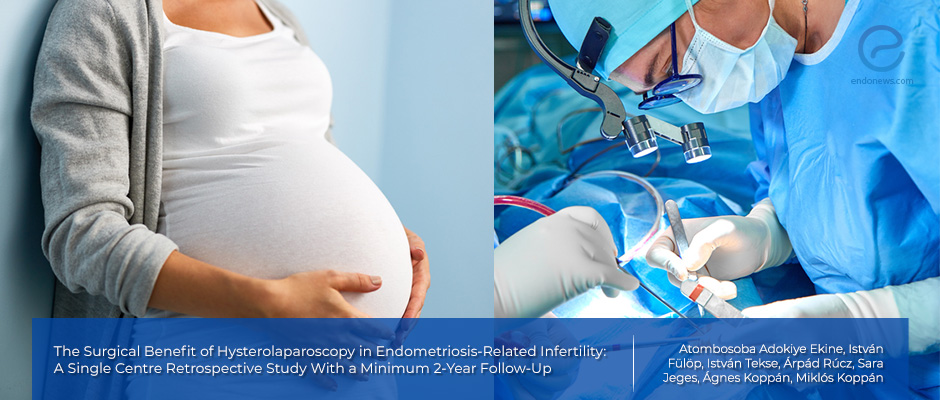Hysterolaparoscopy Plus Assisted Reproduction Improves Fertility in Women with Endometriosis
May 5, 2020
The combined treatment also enhances women’s wellbeing and quality of life.
Key Points
Highlights:
- Timely use of assisted reproductive techniques following hystero-laparoscopic surgery significantly improved reproductive performance in women with endometriosis.
Importance:
- Infertility is common among women with endometriosis and can have a number of negative psychological effects.
- Improving women’s reproductive performance can enhance their wellbeing and quality of life.
What's done here:
- Researchers analyzed fertility performance in 455 women with endometriosis who underwent hystero-laparoscopic surgery.
Key results:
- Women who are age 35 or younger have a higher chance of becoming pregnant, whether spontaneously or following fertility treatment, after surgery compared to women who are older than 35.
- The timely use of an assisted reproductive technique increases fertility after hystero-laparoscopic surgery in women with endometriosis.
- Reproductive performance does not seem to be affected by the stage of endometriosis, and the severity of the symptoms or other factors such as the type and duration of infertility.
Limitations:
This is a retrospective study and has some disadvantages. For example, some patients were only referred to the center because of the surgical procedure and the findings may not apply to the general population.
Lay Summary
Hysteroscopy and laparoscopic surgery is an effective and reliable therapeutic procedure, confirmed a study published in the "Journal of Clinical Medicine". The approach is even more effective when combined with assisted reproductive techniques such as artificial insemination and in vitro fertilization (IVF) performed in a timely manner following surgery.
The combination of the two approaches significantly improves women’s reproductive performance, and enhances their wellbeing and quality of life, the study found.
For the study, a team of researchers in Hungary led by Dr. Miklós Koppán collected data from women with endometriosis-related infertility. All women underwent hystero-laparoscopic surgery and had at least one fertility treatment (artificial insemination or IVF) before the surgery.
A total of 455 women completed the study. Of those, 370 (81.3%) became pregnant following surgery, and 327 had a successful live birth. A total of 146 of the pregnancies (39.5%) occurred spontaneously, 14 occurred following artificial insemination (3.8%), and 210 occurred following IVF (56.8%).
Women who were age 35 or younger had a higher chance of becoming pregnant after surgery compared to those who were older than 35.
The researchers calculated that the timely use of an assisted reproductive technique increased fertility after surgery by 91.3% in women, ages 35 and below, and by 74.1% in women above age 35.
“We encourage and recommend "hystero-laparoscopy" as an ideal tool for a fertility work-up, unexplained infertility, and endometriosis-related infertility,” the researchers concluded.
Research Source: https://pubmed.ncbi.nlm.nih.gov/32069800/
laparoscopy endometriosis assisted reproduction endometriosis pregnancy endometriosis surgery infertility quality of life endometriosis ultrasound

